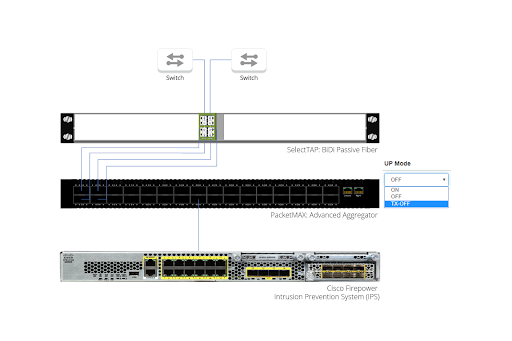

After an epic 15 year reign at number one, 10G tools begin their descent down the charts of network infrastructure, making way for the rise of “hot” 100G technology. Iconic sensations like big data infrastructure and the explosion of bandwidth-intensive applications in large enterprises dropped the bass for 10G networking tools. Cisco, a preferred partner of Garland technology, released the Bidirectional 40G Fiber Connectivity, a real crowd-pleaser to help bandwidth accessibility.
In the battle to boost network bandwidth, architects are left in a predicament when quickly switching between Cisco ports. This swift shift introduces intruders like high latency and packet loss - and many companies experience latency issues that are much more cumbersome than expected.
So, it’s time to jump on the bandwidth bandwagon, but how, when replacing existing 10G tools means a costly swap of your entire cable infrastructure?

To make a strategic shift into 100G networks and ensure existing infrastructure visibility, the Garland Technology BiDi Passive Fiber Network TAP is your architect's standing ovation. The BiDi TAP feeds wire data to the PacketMAX: Advanced Aggregator which then provides the load balancing necessary for existing 10G monitoring and security tools.

Our BiDi Passive Fiber Network TAPs allow network monitoring and security while utilizing Cisco’s BiDirectional Optical Technology. With a full product line of network access tools, including the new 40G-SRBiDi to support Cisco's BiDi optical technology, network capabilities support the 40G/100G bandwidth. As a preferred Cisco Technology Partner, our exclusive solution provides Cisco customers with 100% data visibility and access for their NGFW investment.
If the inline security tool goes off-line, the TAP will bypass the tool and automatically keep the link flowing. The Bypass TAP does this by sending heartbeat packets to the inline security tool. As long as the inline security tool is on-line, the heartbeat packets will be returned to the TAP, and the link traffic will continue to flow through the inline security tool.
If the heartbeat packets are not returned to the TAP (indicating that the inline security tool has gone off-line), the TAP will automatically 'bypass' the inline security tool and keep the link traffic flowing. The TAP also removes the heartbeat packets before sending the network traffic back onto the critical link.
While the TAP is in bypass mode, it continues to send heartbeat packets out to the inline security tool so that once the tool is back on-line, it will begin returning the heartbeat packets back to the TAP indicating that the tool is ready to go back to work. The TAP will then direct the network traffic back through the inline security tool along with the heartbeat packets placing the tool back inline.
Some of you may have noticed a flaw in the logic behind this solution! You say, “What if the TAP should fail because it is also in-line? Then the link will also fail!” The TAP would now be considered a point of failure. That is a good catch – but in our blog on Bypass vs. Failsafe, I explained that if a TAP were to fail or lose power, it must provide failsafe protection to the link it is attached to. So our network TAP will go into Failsafe mode keeping the link flowing.
Single point of failure: a risk to an IT network if one part of the system brings down a larger part of the entire system.
Heartbeat packet: a soft detection technology that monitors the health of inline appliances. Read the heartbeat packet blog here.
Critical link: the connection between two or more network devices or appliances that if the connection fails then the network is disrupted.